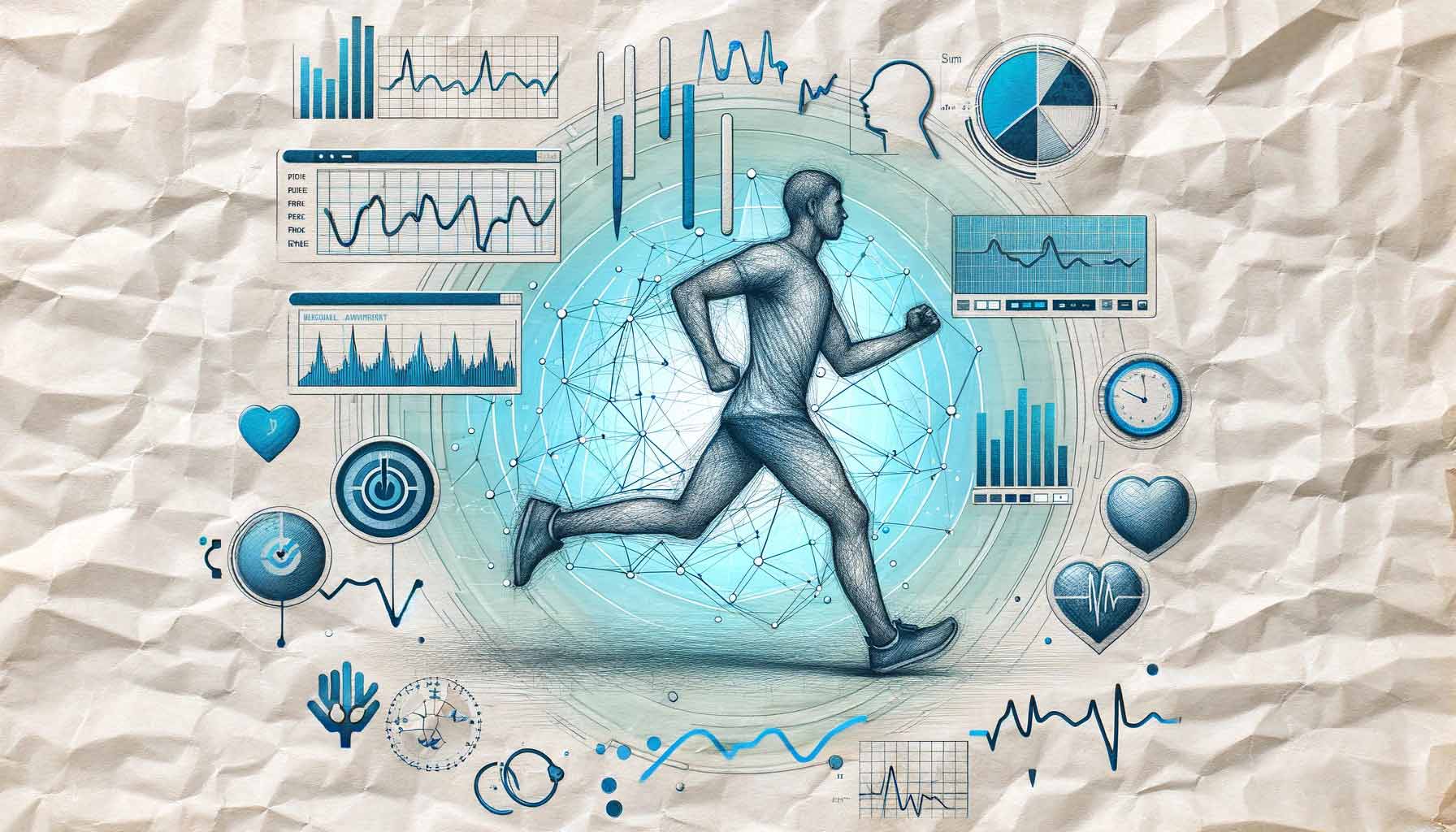1. Introduction
In this article, we examine how machine learning and AI algorithms are applied to physical activity data analysis. These technologies offer researchers valuable tools for detailed insights into physical behavior patterns. We’ll highlight four specific examples of AI applications in scientific studies.
AI’s ability to analyze physical activity data comes from advanced algorithms that identify patterns and anomalies from accelerometers and other wearable sensors. These algorithms can:
- Classify Activities: Identify different physical activities such as walking, running, and sitting with high accuracy.
- Detail Activity Analysis: Provide thorough breakdowns of activity levels throughout the day.
- Detect Subtle Changes: Recognize slight changes in activity patterns that could indicate early signs of health issues.
These features enable researchers to understand the connection between physical activity and various health outcomes more accurately.
“AI can identify subtle changes in activity patterns, allowing for timely health interventions.”
2. Real-World Applications and Scientific Studies
2.2. Identifying Fall Risk in Older Adults
Study: Mannini et al. (2010)
Outcome: This study applied machine learning methods to classify human physical activity from on-body accelerometers, focusing on identifying activities that could indicate an increased risk of falls among older adults. The approach used Hidden Markov Models (HMMs) and achieved high classification accuracy.
Significance: This research supports the development of systems that can monitor and predict fall risks in older adults, enabling timely interventions and fall prevention strategies.
2.2. Identifying Fall Risk in Older Adults
Study: Nait Aicha et al. (2018)
Outcome: This study utilized deep learning to predict falls in older adults based on daily-life trunk accelerometry data. The research used various deep learning models, including convolutional neural networks (CNNs) and long short-term memory (LSTM) networks, to assess fall risk effectively.
Significance: The study highlights the potential of deep learning in early detection of fall risk, enabling timely preventive interventions for older adults.
2.3. Multi-Sensor Approach for Children’s Activity Levels
Study: Troiano et al. (2020)
- Outcome: AI system integrated data from multiple sensors (accelerometers, gyroscopes, heart rate monitors) to assess children’s activity levels.
- Significance: Provided comprehensive insights into physical behavior, aiding in the design of interventions to reduce sedentary time and promote activity among children.
“AI’s multi-sensor approach offers a holistic view of physical behavior, essential for designing effective interventions.”
3. Conclusion
AI is enhancing physical activity research by offering a precise and comprehensive analysis of activity data. These advancements support the development of targeted health interventions and improve our understanding of physical behavior. As AI technology continues to evolve, its applications in health research will likely expand, providing even more powerful tools to improve public health outcomes.
References
- Mannini A, Sabatini AM. Machine Learning Methods for Classifying Human Physical Activity from On-Body Accelerometers. Sensors. 2010; 10(2):1154-1175. https://doi.org/10.3390/s100201154
- Nait Aicha A, Englebienne G, Van Schooten KS, Pijnappels M, Kröse B. Deep Learning to Predict Falls in Older Adults Based on Daily-Life Trunk Accelerometry. Sensors. 2018; 18(5):1654. https://doi.org/10.3390/s18051654
- Troiano, R. P., McClain, J. J., Brychta, R. J., & Chen, K. Y. (2014). Evolution of accelerometer methods for physical activity research. British Journal of Sports Medicine, 54(24), 960-966. https://doi.org/10.1136/bjsports-2018-100395
For more insights into physical activity analysis using AI, explore our comprehensive article on measuring physical activity and sedentary behavior with accelerometers here.
You Might Also Be Interested






Frequently Asked Questions:
What is the role of AI in physical activity research? +
AI plays a crucial role in physical activity research by using advanced algorithms to analyze data from accelerometers and other wearable sensors. These algorithms help classify activities, provide detailed activity analysis, and detect subtle changes in activity patterns.
How does AI classify physical activities? +
AI classifies physical activities by analyzing data from wearable sensors, such as accelerometers. It can identify different physical activities like walking, running, and sitting with high accuracy, helping researchers understand behavior patterns better.
Can AI detect health issues through physical activity data? +
Yes, AI can detect subtle changes in activity patterns that may indicate early signs of health issues. This capability allows for timely health interventions based on real-time risk assessments.
What are some real-world applications of AI in physical activity research? +
AI has been used to classify physical activities, identify fall risk in older adults, and assess children’s activity levels through multi-sensor approaches. These applications provide valuable insights for developing effective health interventions and public health strategies.
How does AI improve physical activity interventions? +
AI improves physical activity interventions by providing precise and comprehensive analysis of activity data. This allows for the design of targeted interventions based on accurate activity patterns, ultimately enhancing public health outcomes.
What future advancements can be expected from AI in physical activity research? +
As AI technology continues to evolve, its applications in health research are expected to expand. Future advancements may include more powerful tools for analyzing physical behavior, leading to better-targeted health interventions and improved public health outcomes.









